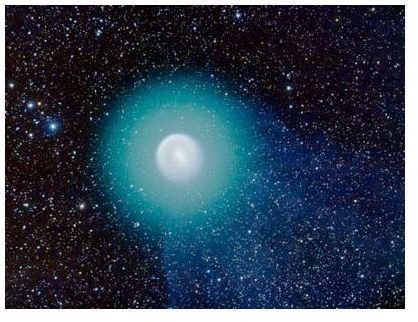All About Comets: Definition, Structure and Size of Comets
An Introduction to Comets
A comet is a mass, mostly comprised of ice, which travels through space and releases gas and dust as it approaches the Sun. They are generally believed to be the left over detritus from ice, gas, rocks and dust from when the outer planets formed billions of years ago. This gas and dust reflects light, and makes comets visible to us. They travel in various types of elliptical orbits around the Sun. The two types of orbits are defined by either taking more or less than two hundred years to orbit the Sun.
Though most comets cannot be seen without the aid of a telescope, comets that pass near enough to Earth and can be seen without the use of a telescope are always the cause of intense interest by the general public. Some comets are even quite famous, such as Halley’s comet, a comet that people without any interest in astronomy are bound to have heard of.
The Composition of Comets
The parts which comprise the comet are called the core, coma, and tail. The core of the comet is made mostly of ice with dust particles. Because of this, scientists liken comets to dirty snowballs flying through the solar system. The cores of comets are not big enough to become spherical due to their own gravity, so comet cores are always irregular in shape. The core most likely also contains various other frozen gases such as methane, ammonia, and carbon dioxide.
The coma of the comet is the gaseous atmosphere. The coma is formed when a comet comes closest on its path to the Sun and the heat vaporizes some of the volatile mass of the core. Comets are extremely difficult to identify in the outer solar system because they are not very reflective. They are cold and frozen and do not have the coma or tail which make them recognizable and easily located. The tail of the comet is the coma trailing off and expulsing its assorted gases. The tail of the comets is what makes them most recognizable to people.
Because comets lose a portion of their core as their orbits near the Sun, comets will eventually dissipate until there is only gas and dust. If a comet crosses Earth’s orbit, it can be the source of a meteor shower when the Earth passes though the debris left in the comet’s wake. However, it takes an extremely long time for this to happen for two reasons. The first is that comets tend to have extremely long orbits. The second reason is the sheer size of comets. While comets on average have diameters of about ten miles, the comas can have a diameter of up to one million miles. Some tails can even extend to distances of one hundred million miles.
Comet Holmes (With a Coma Larger than the Sun)
A Comet’s End
As mentioned, part of the core of a comet dissipates when it’s orbit brings it close to the Sun. Eventually, comets will lose their mass and become a cloud of gas and dust. However, this is not the only way for a comet to meet it’s end; the other ways tend to be a bit more spectacular. More specifically, comets can meet their end upon impacts with larger objects. Comets have been noticed to break apart into multiple pieces without much seemingly to have caused the break up. As such, comets colliding with other celestial objects usually end up taking the majority of the impact.
Of course, a comet colliding with a planet or the Sun will obviously disintegrate. Planetary collisions with comets were more common in the earlier solar system, but they are still a possibility today. As recently as 1994 a comet collided with Jupiter.
However they meet their end, comets will continue to be studied by astronomers due to the possibility of impacts and the information they can reveal about the early solar system. They will continue to play a role in the popularization of astronomy due to the spectacle that comets make when they enter the inner solar system.
